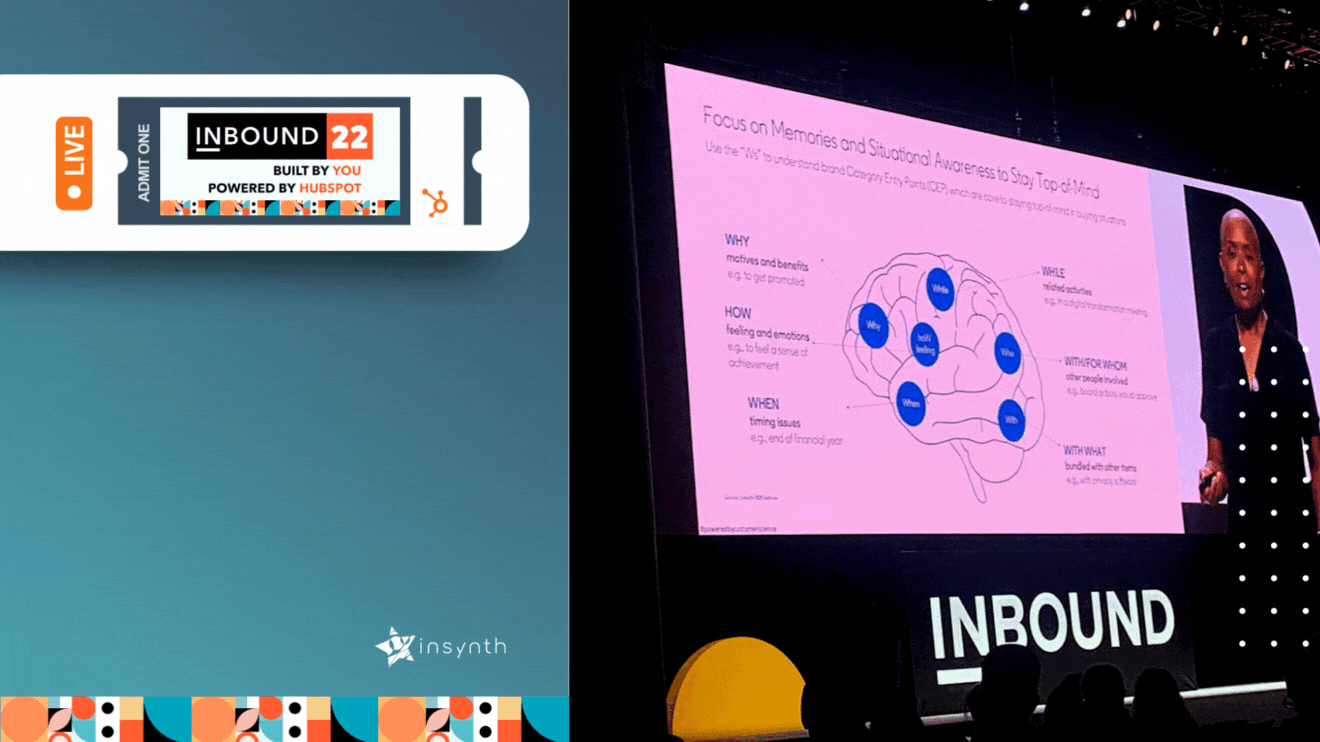2 min read
#INBOUND22 What's Next? Connecting with Future Buyers: Winning Mindshare to Grow Market Share
![]() Louise Urquhart
:
07-Sep-2022 20:47:40
Louise Urquhart
:
07-Sep-2022 20:47:40

LIVE FROM #INBOUND22
The battle to win market share is a constant one and ever evolving as the dynamics outside of and inside organizations make rethinking how brands win share of mind, market and spend an integral part of a company’s growth. This session with speaker Allyson Hugley draws upon current thinking and perspectives from The B2B Institute, LinkedIn’s B2B Marketing think-tank, the Ehrenberg-Bass Institute for Marketing Science and LinkedIn’s own unique economic graph.
Allyson’s plan for this session was to blend new concepts, frameworks, and metrics to guide brand marketers toward new ways of retaining and engaging current customers as well as future customers, buying groups and talent to initiate growth.
She starts by stating that emerging economic and geopolitical pressures, along with industry convergence are reshaping the workplace, as well as a new generation of workers.Allyson breaks it down into 3 stages:
Stage #1 Break Through Barriers
In order to survive – brands need to stand out. They need to be top of the Customers mind. Yet brands are losing customers through poor content, by not having enough brand cut-through and by not adapting to new buyer demographics. According to Allyson, 55% of customers say that if a piece of thought leadership doesn’t pique their interest within the first minute, they’ll move on. They have low tolerance for content that doesn’t hit the spot.
81% of future buyers crave provocative content that challenges existing thinking and pushes them into new frontiers. Content expectations are evolving.
Stage #2 Create Mental Availability
How can your brand stay top of mind? Decisions are increasingly made by a committee of individuals. On average there’s 6.8 people in the B2B buying committee which can add a huge amount of complexity to the buying process.
Adding to this, most future buyers are “out-market” – yet it’s essential that these future buyers, who are not yet ready to buy, are reached.
To stay top-of-mind, brands should focus on memories and situational awareness. To do this, they can focus on the Ws to understand Category Entry Points (CEPs) for brand awareness – Why (exploring motives and benefits), How (looking at feelings and emotions), When (identifying timing issues), While (exploring related activities), With (who else is involved) and finally With What (what items are bundled together). A brand that has established more CEPs is less likely to have customers defect to a different brand. .
Stage #3 Understanding Future Buyers
Buyer demographics are changing. Generation Z-ers are future buyers.
This new generation, has different preferences and ways of working. Research shows that by 2025, Generation Z workers will make up 27% of the workplace – so it makes sense to start establishing relationships with them now.
Generation Z-edders are career motivated and are leading the “great reshuffle” within the workplace as job transitions are up 80% YOY. They crave stability and are digital natives. Being the first generation to be born into a world of peak technological innovation, they are tech focussed and digitally minded, as well as being analytical and well-researched. 3 in 10 Gen Z-ers care about political and social issues – with eco issues being high on the agenda.
Key Takeaways
- Buyers need for higher quality content makes it challenging to breakthrough. Spend time investigating what information will make an impact
- Try to understand and make use of Category Entry Points to create the situational awareness which will capture mindshare of future buyers
- Future buyers will be more technical and focussed on career and societal purposes. It’s imperative to adapt to their different learning agendas and preferences
Right, what's next?
